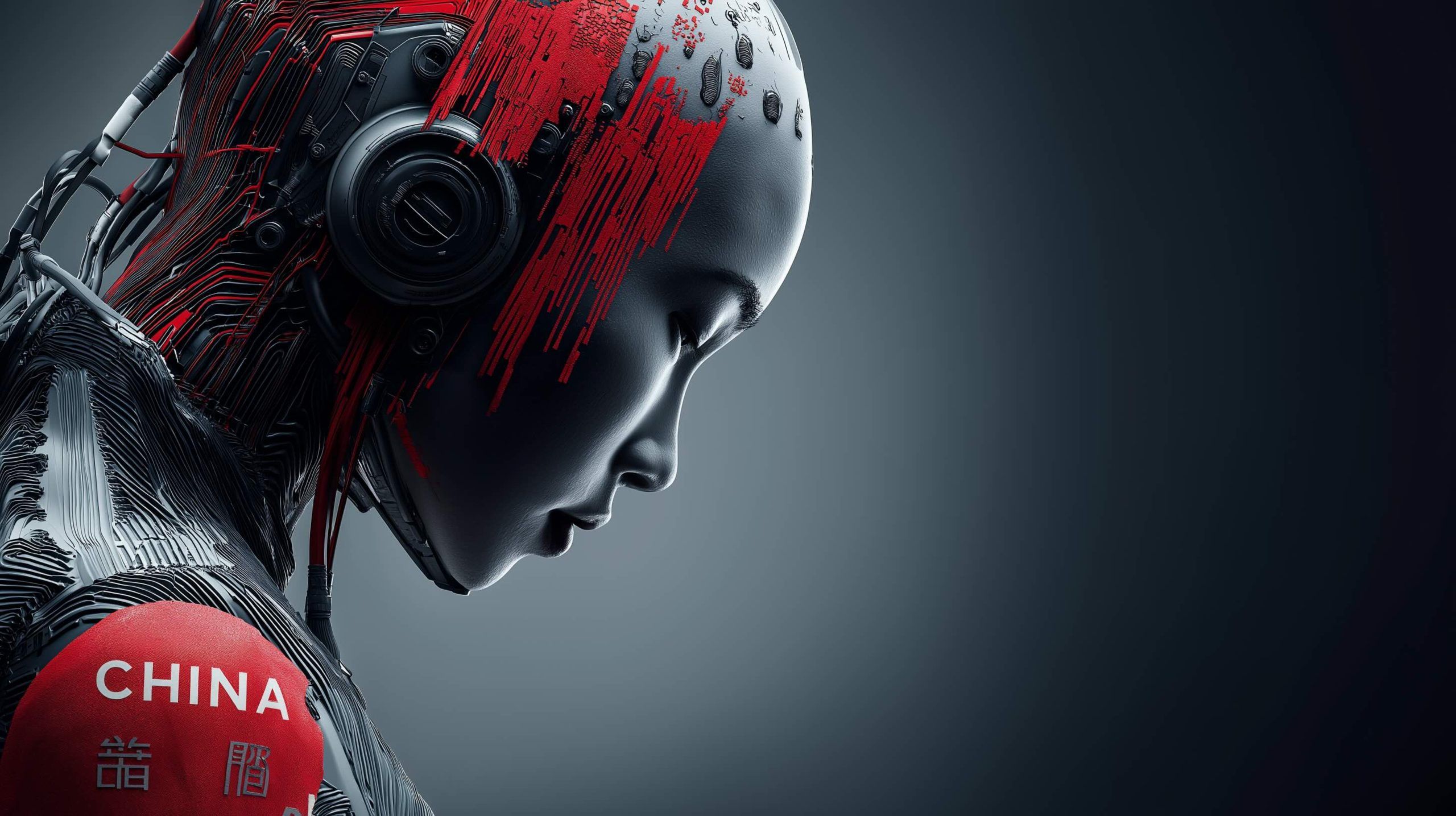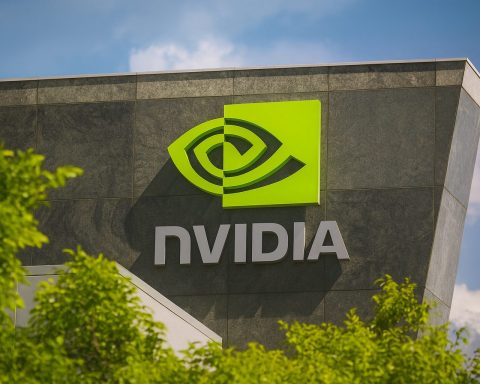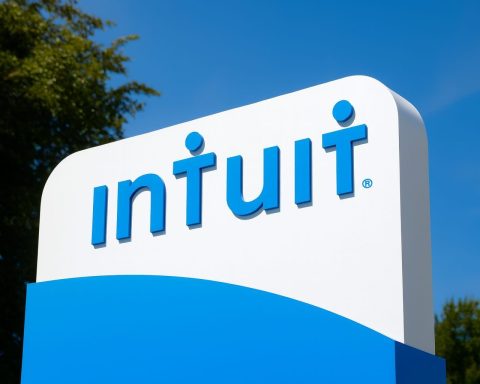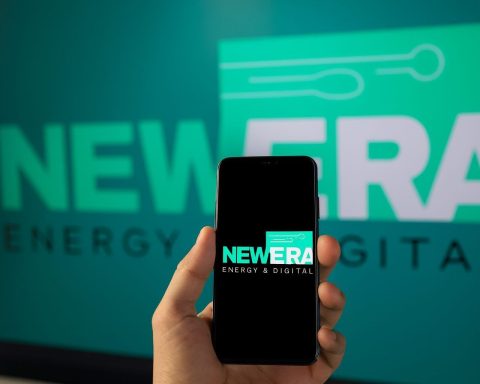- Huawei regained the top spot in China’s smartphone market in Q2 2025 with 12.5 million units shipped, the first time it led for more than four years.
- China saw the launch of more than 100 AI-native devices across smartphones, PCs, and AR glasses in 2025.
- JD.com reported a 7x year-over-year jump in AR glasses sales during the 618 shopping festival.
- Xiaomi unveiled the YU7 SUV, a second EV model with a claimed range of up to 835 km and a price premium of 60,000–70,000 yuan over the Tesla Model Y.
- June NEV sales reached 1.33 million nationwide, with BYD selling 382,000 NEVs in June, the best month ever for the company.
- Xiaomi’s first EV, the SU7, delivered 258,000 units since last year and outsold Tesla’s Model 3 on a monthly basis.
- On July 3, 2025, the US lifted the export ban on EDA tools to China, and NVIDIA planned to resume H20 chip licenses, with AMD MI308 licenses also expected to be approved.
- China quietly issued its 2025 rare-earth mining quotas in June, and rare-earth magnet exports jumped 158% in July after a provisional trade deal.
- Moore Threads and MetaX filed for IPOs on Shanghai’s STAR Market in July 2025, aiming to raise about 12 billion yuan.
- NVIDIA CEO Jensen Huang praised China’s AI progress during the July supply-chain expo, calling Chinese AI models world class.
Consumer Technology: Smartphones, Gadgets & Electric Vehicles
Huawei Leaps Back to #1: China’s smartphone market saw a shakeup in Q2 2025 as Huawei regained the top spot with 12.5 million units shipped, its first time at #1 in over four years [1]. IDC attributes Huawei’s comeback to “strong brand promotion and effective channel policies” after U.S. sanctions had crippled its phone business [2]. Vivo and Oppo followed in market share, while Xiaomi ranked fourth and was the only top-5 vendor to grow shipments (+3.4% YoY) by doubling down on affordable models favored by price-conscious consumers [3]. Apple slipped to fifth place, squeezed by local rivals; it slashed iPhone 16/Pro prices to qualify for government subsidies, which helped narrow its shipment decline [4]. The once-rising Honor brand fell out of the top five, now struggling to differentiate itself beyond being a “Huawei replacement” in the wake of Huawei’s resurgence [5].
AI-Powered Devices Trending: Chinese consumers are embracing smarter gadgets. Over 100 models of “AI-native” smartphones, PCs, and AR glasses have launched, forming a new growth engine in the electronics market [6]. These AI-infused devices – often featuring on-device AI chips and assistants – are actively promoted during shopping festivals (JD.com reported a 7x YoY jump in AR glasses sales during “618”) [7]. Regulators are even developing standards to grade the intelligence of AI devices to guide healthy development of this nascent ecosystem [8].
Xiaomi’s Big Bet on EVs and Chips: Beyond phones, Xiaomi made headlines by unveiling its second electric vehicle, the YU7 SUV, set to hit the market in July [9]. CEO Lei Jun touted the YU7’s up-to-835 km driving range – outclassing Tesla’s Model Y (719 km) – and hinted it would cost ¥60–70k more than the Model Y (which starts at ¥263,500) [10]. Pricing will be confirmed upon launch, but analysts already call it one of Tesla’s strongest domestic rivals [11] [12]. This launch comes as Xiaomi’s first EV model, the sporty SU7 sedan, saw 258,000 deliveries since last year and even outsold Tesla’s Model 3 monthly [13]. However, Xiaomi hit speed bumps: a fatal SU7 autopilot crash in March and subsequent false-advertising complaints dented consumer confidence [14]. Xiaomi apologized for unclear marketing and has since focused on safety messaging. In tandem, Xiaomi is flexing its semiconductor muscles – at the YU7 launch it also revealed new in-house chips. The Xring O1 mobile SoC (unveiled in late May) was claimed to match Apple’s A18 processor in performance [15], and a new Xring T1 chip was announced for tablets and AIoT devices [16]. These chips reflect Chinese brands’ drive to reduce reliance on foreign silicon.
Smart EV Boom and “Underground” Price War: China’s electric vehicle adoption continues at breakneck speed. New energy vehicle (NEV) sales hit 1.33 million in June, a record ~46% of all autos sold [17]. Market leader BYD alone moved 382,000 NEVs in June (its best month ever) [18]. This volume partly stems from a bruising price war ignited earlier by Tesla and domestic automakers. In late spring, authorities urged automakers to end “irrational” price-cutting that was eroding margins [19] [20]. Major carmakers even signed a short-lived pledge to avoid steep discounts. By July, however, reports suggest the price war went underground – instead of headline price cuts, brands offered stealthier incentives like hidden dealer subsidies and zero-interest financing to lure buyers [21]. Regulators are closely watching: the Industry Ministry vowed to crack down on any “unfair competition” or dumping (selling below cost) to stabilize the sector [22] [23]. With 129 EV brands crowding the market, industry analysts warn of looming consolidation. Consultancy AlixPartners projects that by 2030 only ~15 brands will be financially viable (covering 75% of the market) as weaker players fold. Local governments have been propping up many unprofitable EV startups for jobs and prestige, slowing natural consolidation – but the coming “survival of the fittest” should clarify which EV innovators can truly scale sustainably.
Enterprise Technology & Industrial Innovation
Digital Transformation Drive: China’s industrial and enterprise tech sectors maintained solid momentum through H1 2025. Official data show the “digital economy” industries (5G, AI, etc.) grew 9.3% YoY in revenue in the first half, accelerating from last year [24]. Enterprise investment in digital upgrades is robust – manufacturing IT investment rose ~7.5%, aided by government subsidies for tech retrofits [25]. A July state report highlighted rapid integration of tech innovation into industry: for instance, industrial robot output jumped 35.6% YoY in H1, while service robots rose 25.5% [26]. From factory floors to warehouses, automation is picking up speed. Beijing is bullish on robotics as a pillar of its “new industrialization” agenda, pouring funds into R&D and encouraging robot use in all sectors of the economy [27]. “China’s robot industry may not be world-class yet, but it’s catching up at lightning speed,” noted one Deutsche Welle analysis, citing the central government’s vision (and deep pockets) to deploy robots across manufacturing, logistics, healthcare and more [28].
Enterprise Cloud and AI Solutions: China’s cloud giants and enterprise IT providers are adapting to a new landscape amid geopolitical pressures. Alibaba’s sweeping restructuring (announced in 2023) continues to reverberate. Notably, Alibaba has put on hold an earlier plan to spin off its Cloud Intelligence unit, citing uncertainties from U.S. chip export curbs [29] [30]. U.S. sanctions on advanced AI chips last year suddenly made it harder for Alibaba Cloud – which heavily uses NVIDIA GPUs – to plan an independent future. Tencent likewise said U.S. chip restrictions hit its cloud services outlook [31]. In response, Chinese cloud providers are doubling down on self-reliance: investing in domestic AI chips, heterogeneous computing (e.g. Huawei’s Ascend accelerators) and customized software stacks to ensure continuity. Huawei, for example, has been aggressively marketing its full-stack enterprise solutions. In June, Huawei even launched a new MateBook X laptop that runs on a Chinese-made 7nm Kirin X90 chip (instead of an Intel/AMD processor) [32]. While not cutting-edge – TechInsights noted it’s a step behind 5nm tech – this shows Huawei’s determination to replace foreign tech with its own wherever possible [33]. The laptop also runs Huawei’s in-house HarmonyOS. “U.S.-imposed tech controls likely continue to hold SMIC back from 5nm,” the research firm observed, but Huawei’s CEO Ren Zhengfei downplayed the gap as just one generation [34]. He touted creative workarounds like “chiplet” architectures (combining multiple less-advanced chips to act as one) to boost performance [35]. These efforts illustrate how Chinese enterprise tech is innovating under pressure – developing homegrown chips, open-source software (e.g. Chinese Linux distros and databases), and industry-specific AI solutions to reduce dependency on Western suppliers.
Global Supply Chain Expo: China is also promoting itself as a resilient tech supply chain hub. In mid-July, Beijing hosted the 3rd annual China International Supply Chain Expo (nicknamed “链博会”). Tech giants from home and abroad convened to showcase innovations in smart logistics, industrial IoT, and AI-driven supply chain management [36]. NVIDIA’s CEO Jensen Huang headlined the event, reflecting its significance. Huang used the stage to praise China’s tech ecosystem – calling Chinese AI models “massive, dynamic, highly innovative” and “world class” [37] [38] – and emphasized that NVIDIA is eager to keep supplying Chinese industries (more on that below). International attendees lauded China’s supply chain strength and “full-spectrum” manufacturing capabilities [39]. The expo underscored that despite geopolitical rifts, China remains deeply integrated in global tech production, and multinational firms are keen to collaborate in areas from industrial AI to green manufacturing.
Artificial Intelligence: New Models, Regulations, and Praise
Surging AI Innovation Despite Sanctions: July brought signs that China’s AI sector continues to flourish – perhaps even because of U.S. chip sanctions spurring domestic innovation. Chinese tech circles buzzed about recent AI feats that some dubbed a “Sputnik moment” for the West [40]. One example making rounds: a little-known startup DeepSeek reportedly trained a record-breaking large model using limited computing resources, achieving cutting-edge results at a fraction of the cost that U.S. labs like OpenAI spend [41] [42]. Meanwhile, Alibaba’s “Qwen” AI model (its answer to GPT-style systems) topped several global benchmarks, drawing national pride. “The gap between leading U.S. and Chinese AI labs is closing,” observed investor Kevin Xu, noting Chinese open-source models now compete globally in ways that are hard to track [43]. Years of state-backed talent development, academic-industry collaboration, and a culture of open-source experimentation have enabled Chinese AI researchers to keep advancing even under chip constraints [44]. Indeed, Chinese companies are rapidly adapting their AI techniques to do more with less. Algorithms are optimized for efficiency; domestic chip startups are designing specialized AI accelerators (e.g. Cambricon, Biren – see Startup section); and companies like Huawei are clustering multiple older chips to approximate the power of a single high-end GPU [45].
NVIDIA’s CEO Hails Chinese AI: In a striking public endorsement, NVIDIA CEO Jensen Huang – arguably the most influential figure in AI hardware – lavished praise on China’s AI progress during his July visit to Beijing. Speaking at the supply chain expo, Huang said AI models from Chinese firms like DeepSeek, Alibaba, and Tencent are “world class,” calling China’s open-source AI community a “catalyst for global progress” [46]. He noted that AI is “revolutionising supply chains” and credited China’s huge pool of AI researchers and data for driving innovation [47]. Huang’s high-profile compliments were well-received in China, aligning with a narrative that China’s AI is catching up. (It’s also savvy business: NVIDIA derives 13% of its revenue from China [48] and is lobbying to maintain that market – more on the NVIDIA story below.)
Generative AI Gets Regulated: On the policy front, China is taking world-leading steps to regulate generative AI. In mid-July, the Cyberspace Administration of China (CAC) finalized new AI content labeling rules that will take effect Sept 1, 2025 [49]. Under these rules, any AI-generated content that could mislead the public must be clearly marked with explicit labels – e.g. a visible watermark or tagline indicating “This content is AI-generated” [50]. For instance, chatbot-generated text should include a notice in the message, and AI-generated images or videos should have visible markers. Additionally, all AI content must carry hidden embedded metadata (an implicit label) with the creator’s identity and content ID for traceability [51] [52]. Online platforms (WeChat, Weibo, Douyin, etc.) are required to detect unlabeled AI content and add labels themselves if something seems AI-made [53] [54]. The CAC even defined tiers: “confirmed AI-generated content” (detected metadata) should be explicitly labeled by platforms, while content merely suspected of being AI-made should get a cautionary label (“possibly AI-generated”) [55]. These stringent measures aim to combat deepfakes, fraud, and misinformation in the AI era. Providers of genAI services must also refine their algorithms to prevent prohibited content and respond to incidents, per draft guidelines [56] [57]. China’s proactive AI governance – balancing support for innovation with strict oversight – puts it at the forefront of global AI policy. (Notably, one major Chinese generative AI startup, Baichuan Intelligence, closed a $300M funding round in July, and promptly open-sourced a new 53-billion-parameter model without filters – testing the limits of these regulations. But that’s another story.)
AI in Industry and Society: China is keen to showcase beneficial uses of AI. The government reports that homegrown large AI models (including open-source ones) are rapidly being applied in sectors like electronics manufacturing, new materials, and consumer goods, spawning new business models and efficiencies [58]. For example, manufacturers use AI models for quality control and design optimization; chemical companies use AI to discover materials; and retailers deploy AI for trend forecasting. Authorities are also funding pilot projects to integrate AI in agriculture, healthcare, and smart cities. By H1 2025, over 40 national AI innovation platforms had been established to diffuse AI tech into traditional industries [59]. And despite concerns over job automation, local governments are rolling out “AI + upskilling” programs to help workers transition into higher-value roles alongside AI tools.
Semiconductor Industry: Chip War Thaws & Self-Reliance Accelerates
A Rare Ceasefire in the Chip War: A major development in July was an unexpected easing of U.S. export restrictions on AI chips and tools to China, signaling a temporary tech détente. On July 3, Washington lifted a short-lived ban on exporting chip design software (EDA tools) to China, which had been imposed in late May [60]. The ban had effectively cut off over 10% of the revenue for EDA giants Synopsys and Cadence, rattling their forecasts [61]. With the reversal, both companies’ stocks surged ~5–6%, and analysts declared the move a “distinct warming of relations and a small ceasefire in the chips war.” [62]. “There are no winners in a tech trade war,” noted Susannah Streeter of Hargreaves Lansdown, applauding the U.S. decision [63]. This U.S. concession was part of a broader trade negotiation framework emerging between the Biden/Trump administration (President Donald Trump is back in office as of January 2025) and Beijing. In fact, just days later the U.S. approved NVIDIA to resume some advanced AI chip sales to China, which had been banned in April. By July 16, NVIDIA announced it is filing for U.S. licenses to sell its H20 GPU – a China-specific high-end AI chip – and had been assured the licenses will be granted soon [64]. This marked a 180° reversal of the strict AI chip export curbs enacted just three months prior [65] [66]. Rival AMD likewise said it expects approval to ship its MI308 AI accelerators to Chinese customers once licenses clear [67]. The policy flip-flop took many in Washington by surprise, even prompting bipartisan criticism. “Handing our foreign adversaries our most advanced technologies is dangerously inconsistent with our stated China export control policy,” fumed Rep. Raja Krishnamoorthi, while another lawmaker warned it could help China “narrow, if not overtake, the U.S. lead in AI” if China secured enough H20 chips [68] [69]. Nonetheless, the chip trade thaw is underway, largely tied to behind-the-scenes deal-making: U.S. Commerce Secretary Howard Lutnick admitted NVIDIA’s China sales resumption was “put in the trade deal with the magnets”, linking it to negotiations over rare earth minerals [70].
Rare Earths as a Bargaining Chip: Rare earth elements – critical for tech and defense – have become Beijing’s leverage in the tech war. China produces ~70% of the world’s rare earths, and in March 2025 it halted rare earth exports to the U.S. amid a trade spat [71]. This move jolted supply chains for everything from EV motors to missiles. By July, signs of a compromise emerged. China quietly issued its 2025 rare earth mining quotas in June but without the usual public announcement, even instructing companies not to disclose the numbers for “security reasons” [72] [73]. Analysts saw this opacity as China tightening control over the sector while using it as a trade-talk carrot. Reuters sources noted the quota volumes (typically announced in Q1) were delayed and secretive – an unusual step reflecting how “increasingly sensitive” Beijing is about rare earth supply [74] [75]. Notably, China had in April expanded its export license requirements to cover certain rare earth magnets – crucial for high-tech manufacturing – in retaliation for earlier U.S. tariffs [76]. Those curbs even forced some Western automakers to partially halt production due to material shortages [77]. Now, with high-level trade talks ongoing (including an apparent rare earths truce), China may loosen the spigot. Indeed, Bloomberg reported that China’s rare-earth magnet exports jumped 158% in July after a provisional trade deal [78]. The rare earth chess match underscores how tech supply chains and geopolitics are deeply entwined: China is leveraging its mineral dominance to secure concessions (like chip access), while the U.S. seeks to onshore or ally-shore these supplies long-term.
Chinese Firms Scramble for High-End Chips: The prospect of NVIDIA’s H20 AI GPUs returning to the Chinese market set off a frenzy among China’s tech companies. Bytedance and Tencent raced to submit purchase applications, hoping to get priority in the queue for these “legal for China” chips [79] [80]. (The H20 is a tweaked version of NVIDIA’s cutting-edge silicon, slightly nerfed to meet U.S. export limits – e.g. reduced interconnect bandwidth – but still far superior to any domestic alternative. Crucially, it runs NVIDIA’s full software stack, a de facto standard in AI [81].) ByteDance denied it was currently applying, and Tencent stayed mum [82], but insiders say an “approved buyers list” is being drawn up by NVIDIA to allocate the hotly demanded chips [83]. Chinese AI startups and cloud providers are also in the fray – essentially every firm that had been cut off in April now wants to hoard H20s. Meanwhile, Huawei’s chip arm continues to push its own AI silicon as a substitute. Huawei’s flagship AI GPU, the Ascend 910C, is being offered to domestic cloud providers that can’t get NVIDIA’s best [84] [85]. Still, NVIDIA’s Jensen Huang cautioned U.S. leaders that if they block American chips, Chinese developers will simply pivot to Huawei and other local solutions, imperiling NVIDIA’s market share [86] [87]. “If China can get a million H20 chips, it could significantly narrow the U.S. AI lead,” one Washington AI expert observed, highlighting what’s at stake [88].
Huawei’s Backdoor Exports: Interestingly, Huawei itself moved to export its AI chips to new markets amid the U.S. ban at home. In a bid first reported on July 10, Huawei is trying to sell small batches of its Ascend AI chips to the Middle East and Southeast Asia [89]. The Chinese tech giant reached out to potential buyers in the UAE, Saudi Arabia, and Thailand with offers of its older Ascend 910B chips – aiming to establish a foothold in regions where U.S.-made NVIDIA GPUs currently dominate [90]. Huawei is pitching the Ascend chips in the “low thousands” quantity (exact figures unclear) [91], and also dangling remote access to its CloudMatrix 384 AI cloud system (powered by more advanced Huawei chips that are too supply-constrained to export) as a service for customers who can’t import NVIDIA hardware [92] [93]. So far, no overseas deals have been finalized; Gulf customers showed tepid interest and talks in Thailand are ongoing [94] [95]. But Huawei’s intent is clear – to turn U.S. export curbs into a competitive advantage abroad. As an NVIDIA spokesperson acknowledged: “With current export controls, we are effectively out of the China datacenter market, now served only by competitors like Huawei.” [96] If Huawei can’t meet Chinese demand due to sanctions, it will seek buyers elsewhere, especially in emerging AI markets. This Eastward push could herald a new front in the chip wars: Chinese chipmakers targeting third-country markets that Western firms overlook or forsake.
Domestic Chip Self-Reliance: Under pressure, China is doubling down on building a homegrown semiconductor ecosystem. July saw a flurry of fundraising and IPO plans by Chinese chip startups eager to fill the gaps left by U.S. tech. Two prominent GPU design startups – Moore Threads (Beijing) and MetaX (Shanghai) – filed for IPOs on Shanghai’s STAR Market, aiming to raise a combined ¥12 billion ($1.65B) [97] [98]. Both were founded by ex-NVIDIA/AMD engineers and specialize in GPUs for AI and graphics. Their prospectuses explicitly cite U.S. sanctions as a bittersweet catalyst: while bans bar them from cutting-edge foreign tools and Nvidia’s latest chips were temporarily banned, the restrictions are “prompting Chinese companies to accelerate domestic substitution” of foreign tech [99] [100]. MetaX noted geopolitical pressure is forcing local clients to try Chinese GPUs, a silver lining that could help these nascent chipmakers win over domestic cloud providers and data centers [101]. Analysts say tapping public markets will be crucial for funding R&D at scale, since developing competitive GPUs is extremely capital-intensive [102]. Investor appetite seems strong: yet another AI chip unicorn, Biren Technology, just raised ¥1.5B in fresh capital and is reportedly eyeing a Hong Kong IPO next [103].
Even more established players are ramping up. Cambricon Technologies, often dubbed China’s AI chip champion, announced a revised plan in July to raise ~¥4 billion via a private A-share placement [104]. The funds will mainly go into new AI training chip projects and a software platform for large-model computing [105] [106]. Cambricon, founded in 2016 with government backing, was one of the first Chinese AI chip designers and is already listed on STAR Market. Its latest chips (7nm processors for cloud AI) support popular models like GPT and Llama, and even power Huawei devices (the Kirin chips in some Huawei phones use Cambricon IP) [107] [108]. After years of losses, Cambricon finally turned profitable in 2025 thanks to a surge in domestic demand for AI silicon [109] [110]. The company’s moves typify China’s “whole-of-nation” push in semiconductors – the state is funneling capital to chip firms via stock markets, state funds, and procurement mandates to incubate viable alternatives to U.S. tech. Progress is uneven (e.g. SMIC is still behind on sub-7nm lithography [111]), but the sheer momentum is undeniable.
Regulatory & Policy Changes in Tech
AI Governance Measures: As noted, China rolled out landmark regulations on generative AI in July. The new CAC rules for AI content labeling are among the world’s first of their kind, requiring both visible labels and hidden metadata to clearly flag AI-generated content [112] [113]. This complements earlier guidelines on deepfakes and algorithmic recommendations. Tech platforms are now building detection systems to comply – for example, Tencent and Alibaba are training classifiers to sniff out AI-created images or text lacking the proper tags. Violators could face fines or business suspensions. These moves position China as a leader in grappling with AI’s societal impacts, from fake news to IP theft. At the same time, officials emphasize a “development and security” balance. The government wants domestic AI champions to thrive – thus it calls these regulations “interim measures,” leaving room to iterate as the tech evolves [114]. Notably, in March 2025 China also adopted new rules on AI-generated media, mandating that any AI-synthesized impersonation of real people (in audio or video) must get the person’s consent, among other protections [115]. All these policies aim to set guardrails without killing innovation. Many Chinese AI firms publicly voiced support, seeing clear rules as helpful for long-term growth (and possibly gentler than more draconian bans elsewhere).
Data and Cybersecurity: July saw continued enforcement of China’s strict data laws. Regulators conducted spot audits under the Data Security Law and Personal Information Protection Law, targeting tech firms that handle sensitive data (e.g. facial recognition companies and fintech apps). The Cyberspace Administration levied fresh fines on several app operators for illegally collecting user data beyond necessity. Meanwhile, the long-telegraphed Cybersecurity Review of U.S. memory chipmaker Micron’s China business, which concluded in May with Micron largely barred from critical infrastructure purchases, continued to influence procurement policies – state firms in July were observed quietly replacing Micron chips with South Korean or domestic equivalents. Additionally, China’s expanded Counter-Espionage Law (effective July 1) cast a shadow over foreign consultancies and due-diligence firms, causing some to curb data sharing with overseas partners to avoid legal risk. While not directly a tech regulation, it adds to the compliance burden for tech businesses operating in China, as the law’s broad definition of “national security” data could theoretically encompass supply chain or operational information. Foreign business groups have sought clarity on how this law intersects with normal tech data flows.
EV and Tech Sector Policies: Policymakers also fine-tuned industrial policies. In the auto sector, the Ministry of Industry and Information Technology (MIIT) in late June gathered automakers to promote “rational competition” amid the EV price wars [116]. By early July, local governments began withdrawing some EV subsidies that were running out of funds [117], transitioning to more market-driven incentives. The State Council signaled it may extend tax breaks for NEV purchases through 2027, but also warned carmakers not to rely indefinitely on state support. In the consumer tech realm, authorities launched a campaign to curb smartphone e-waste and encourage device recycling/upgrades, including subsidies for trading in old handsets. MIIT’s July briefing highlighted plans for a “Green Tech” pilot in 20 cities, incentivizing use of energy-efficient 5G infrastructure and data centers.
On the capital markets side, China is cautiously re-opening the faucet for tech IPOs after a freeze during the regulatory crackdowns of 2021–2022. July saw the securities regulator approve a few high-profile IPO filings (one being a major cloud computing unit spinoff, and another a biotech unicorn) as signs that the tech listings pipeline is restarting under new, more predictable rules. Hong Kong’s stock exchange, too, is benefitting from this shift (see below). In short, while heavy-handed crackdowns on consumer internet firms have subsided since late 2022, Beijing remains active in shaping tech sectors via targeted rules – be it taming online lending risks, controlling videogame content, or steering investment into “hard tech” areas like chips and aerospace rather than frothy internet services.
International & Regional Relations Affecting Tech
US–China Tech Diplomacy: After years of escalations, July brought a cautious thaw in U.S.–China tech relations. High-level talks resumed, with U.S. Treasury officials and China’s vice premier holding meetings about trade and technology exchange. The results are tangible: the U.S. removed certain export bans (on EDA software and AI chips as discussed) and in return China eased its rare earth embargo. Both sides framed these as confidence-building steps. “I think trade is in a good place and now we can start talking,” remarked U.S. Treasury Secretary Scott Bessent, hinting at deeper negotiations [118]. However, tensions persist beneath the surface. In Washington, bipartisan wariness of China’s tech rise remains high – Congress is debating outbound investment screening that could restrict U.S. venture capital flowing into Chinese AI or semiconductor startups. And in Beijing, officials repeat that U.S. “tech containment” has not gone away, citing moves like continuing embargoes on extreme ultraviolet (EUV) lithography machines and export controls on advanced semiconductor equipment via allies like the Netherlands and Japan. (In fact, per an agreement with the U.S., the Dutch government expanded its own export control list as of April 1, 2025 to cover more chip tools, though ASML said the impact on its business is minimal [119] [120].) China’s Foreign Ministry in July publicly criticized the politicization of tech trade, saying it “opposes the weaponization of science and technology to maliciously blockade and suppress China.” [121] This rhetoric is aimed at rallying Chinese industry and cautioning the U.S. that China won’t remain passive.
Both nations also maneuvered on the global stage. The U.S. continued pressing allies to exclude Chinese telecom gear from 5G networks and restrict Chinese cloud providers over data security fears. China, for its part, deepened tech ties with non-Western partners: in July it inked new agreements with Indonesia and the UAE on joint AI research and smart city projects, and pushed for greater tech coordination within BRICS. Notably, President Trump visited Saudi Arabia in May, securing a staggering $600 billion in investment pledges (much earmarked for U.S. tech and infrastructure) [122] – a move widely seen as countering China’s influence in the Gulf’s tech sphere. This global courting underscores how technology is now central to foreign policy: whether via export deals, aid (China’s Digital Silk Road projects), or sanctions, countries are vying to shape who builds the next generation of tech infrastructure worldwide.
Hong Kong: Bridge Between Worlds: Hong Kong’s role in the Chinese tech ecosystem gained prominence in July. At the SCMP China Conference 2025 in Hong Kong, officials and executives highlighted the city as the “super-connector” where capital meets innovation [123] [124]. Hong Kong’s Chief Executive John Lee asserted that in uncertain times, “Hong Kong is the link you can always bank on,” offering stability, rule of law, and global access while being part of China’s growth [125]. The conference, themed “Where Capital Meets Innovation,” emphasized Hong Kong’s resilient capital markets and its drive to attract tech IPOs and talent. Indeed, Hong Kong IPOs are picking up – experts predict up to US$32 billion could be raised in HK listings this year [126], a strong rebound after a dry spell. Chinese tech firms, from Alibaba’s logistics arm to biotech unicorns, are choosing Hong Kong for listings to tap international investors. Additionally, Hong Kong is carving out niches in fintech and AI. The city has been wooing mainland AI companies to set up R&D centers or international HQs there, pitching its East-meets-West advantages. As an example, facial recognition firm CloudWalk and AI voice giant iFlyTek expanded to Hong Kong earlier in 2025, drawn by the city’s freer data environment and government incentives [127]. Hong Kong is also actively licensing crypto trading platforms (a pivot toward becoming a regulated crypto hub, contrasting with mainland China’s ban). All told, Hong Kong is leveraging its unique status to remain integral to China’s tech journey – providing a testing ground for ideas (like more open data policies), a fundraising platform insulated from mainland volatility, and a talent magnet in the Greater Bay Area tech cluster.
Taiwan and the Chip Nexus: Across the strait, Taiwan’s tech fate remains interlinked with China’s, even as geopolitics strain ties. Taiwan’s crown jewel, TSMC, had a banner quarter thanks to the AI wave. The world’s top chip foundry reported a 60% jump in Q2 profit – a record T$398.3 billion ($13.5B) – fueled by roaring orders for AI accelerator chips [128] [129]. TSMC’s CEO C.C. Wei noted that AI demand is “getting stronger and stronger,” projecting another big sales leap in Q3 and raising TSMC’s full-year growth outlook to ~30% (in US$ terms) [130] [131]. Crucially, Wei welcomed the U.S. decision to let NVIDIA sell H20 chips to China, calling it “very positive news” for TSMC since China is a huge market for NVIDIA and thus for TSMC as its supplier [132] [133]. “My customer can continue to supply that big market… in return it’s very positive for TSMC,” he said at the earnings press conference [134]. This underscores how Taiwan’s semiconductor industry benefits from China’s tech demand, U.S. restrictions notwithstanding. However, storm clouds loom: President Trump has floated the idea of tariffs on Taiwanese chips to pressure TSMC into more U.S. production. In April, he even threatened a colossal 32% reciprocal tariff on Taiwan (mirroring its semiconductor market share) [135]. TSMC acknowledged it is wary of potential U.S. tariffs later this year, though none have materialized yet [136] [137]. Meanwhile, TSMC is heavily investing in manufacturing abroad – it announced, alongside Trump, a $100B expansion in the U.S. (with new fabs in Arizona, one already operational) and is building fabs in Japan [138] [139]. These moves aim to diversify chip supply chains under U.S. pressure, but also raise questions about the long-term interplay between Taiwan, China, and the U.S. in chips. For now, Taiwan enjoys booming chip demand from both East and West – Chinese AI firms, American tech giants, automotive and 5G customers – even as it navigates an increasingly delicate political line. Notably, there’s been talk of direct cross-strait tech cooperation quietly resuming in areas like chipmaking materials, given their mutual dependencies, but officials keep such dialogue low-profile. The health of Taiwan’s tech sector is crucial to China’s tech ecosystem (China is TSMC’s second-largest market after the U.S.), so industry watchers eye any sign of conflict or rapprochement.
Startup & Venture Activity: Funding, IPOs and Innovation
Investment Landscape: China’s tech startup ecosystem remained vibrant in July, though funding patterns are shifting. Venture funding in Asia fell in H1 2025 compared to last year, with China seeing a slide in late-stage mega-deals [140]. Investors are more selective, favoring “hard tech” (chips, AI, advanced manufacturing) over consumer internet plays. Despite this, China still leads Asia for startup capital – startups in China raised about $26B in H1 across stages, topping India and Southeast Asia [141]. And China continues to mint unicorns. As of July 2025, China has produced 247 unicorns (startups valued ≥ $1B) [142] – second only to the U.S. globally. This list spans e-commerce (e.g. SHEIN, Xiaohongshu), AI and big data (SenseTime, Fourth Paradigm), fintech (Ant Group spinoffs), biotech, electric vehicle makers (Nio, Xpeng were once on it), and more [143]. Notably, AI startups are ascendant. Firms like Baichuan, Zhipu, MiniMax, and LangChain’s Chinese edition have drawn significant investments as the race to build China’s ChatGPT alternatives heats up. Several of these AI startups are approaching unicorn status within mere months of founding, fueled by both venture capital and government-guided funds. (For example, one AI agent startup “Lovable” raised $200M at a $1.8B valuation just 8 months after launch, a sign of the frothy enthusiasm in this space [144].)
Hard Tech IPOs Gaining Momentum: After a lull, Chinese tech IPOs are making a comeback, especially on domestic exchanges and in Hong Kong. Shanghai’s STAR Market – a NASDAQ-style board for high-tech firms – is set for a slew of listings in the second half of 2025. As mentioned, GPU designers Moore Threads and MetaX filed in July, each aiming for multi-billion yuan raises [145]. Other anticipated STAR debuts include a quantum computing startup and several semiconductor equipment makers benefiting from China’s fab expansion. The renewed IPO wave reflects regulators’ support for capital markets to fund innovation. Valuations are lofty: Cambricon’s stock was up nearly 400% over the past year [146], and many pre-IPO firms command rich price-to-sales ratios, indicating investor confidence in China’s tech self-sufficiency drive. Hong Kong, too, is seeing a pipeline of mainland tech listings. In July, it emerged that Biren Technology (AI chip unicorn) is considering an HK IPO [147], and ByteDance was again rumored to be exploring an offshore listing for some business units (though ByteDance denied any imminent plan). According to KPMG, Hong Kong IPOs, led by tech and fintech issuers, could raise up to US$30–32 billion in 2025 if market conditions hold [148]. This would mark a strong rebound from the last two years. International capital seems eager to re-engage with Chinese tech, provided regulatory risks are clearer now.
Notable Startup Moves: A few specific startup stories from July: Alibaba’s AI spinoff – its cloud-AI division now rebranded as “Alibaba Intelligence” – reportedly is preparing for a Hong Kong IPO by early 2026, aiming to raise ~$5B (this comes after Alibaba abandoned a full spin-off of the Cloud unit, as noted earlier [149]). Ant Group, Alibaba’s fintech affiliate, finally had its $1B fine settled in late June, and in July it quietly started carving out non-core units, potentially to revive its IPO down the line. In the EV arena, Xpeng Motors announced a $700M investment from Volkswagen in a strategic partnership, a remarkable crossover between a Chinese EV startup and a foreign auto giant – this boosted sentiment for the EV startup sector. And Ziroom, a leading rental tech platform, filed for a U.S. listing, testing the waters for Chinese tech IPOs in New York again after a hiatus.
All told, Chinese startups are adapting to a new normal: those in strategic tech fields enjoy strong backing (state funds and private capital aligning), while those in consumer internet or ed-tech face a more cautious investment climate post-crackdown. But with China’s huge market and the government championing tech innovation as the core of economic growth, the startup ecosystem remains one of the world’s most dynamic. Investors from Silicon Valley to Singapore are watching closely, and in some cases joining in – notably, July saw several U.S. VC firms apply for China’s new qualified foreign LP program, which would let them invest in RMB funds onshore, a sign that global money still seeks exposure to China’s next tech champions (even amid geopolitical headwinds).
Bottom Line:July 2025 showcased China’s tech sector at an inflection point – enjoying a burst of innovation and market successes, from AI breakthroughs to record EV sales, while navigating policy shifts and a complex geopolitical dance. Consumer tech giants like Huawei and Xiaomi are back in force with new products; enterprise and industrial tech is accelerating with automation and domestic IT solutions; and the AI domain is thriving under pressure, even as regulators step in to guide its trajectory. Internationally, a tentative tech trade truce has provided breathing room, benefitting companies on both sides of the Pacific. Hong Kong and Taiwan, each in their own way, underscore how Greater China’s tech ecosystem is deeply interconnected with global markets – whether through capital, talent or supply chains. The surge of funding into chip startups and the buzz around Chinese AI models reveal a nation forging ahead to lead in technology, despite – or perhaps strengthened by – the challenges thrown at it. As we move into August, stakeholders will be watching if the U.S.–China tech détente holds, how effectively China’s new AI rules are implemented, and which “next big thing” Chinese startups will unveil. One thing’s for sure: 2025 is shaping up as a pivotal year in the tech rivalry and partnership between China and the world, and July’s developments may well be remembered as a turning point.
Sources: China Government & MIIT reports [150] [151]; Reuters news on Nvidia, Huawei, Xiaomi, TSMC and more [152] [153] [154] [155]; Sina Technology/IDC smartphone data [156] [157]; SCMP conference coverage [158] [159]; TrendForce/industry reports [160] [161]; and others as cited above.
References
1. finance.sina.com.cn, 2. finance.sina.com.cn, 3. finance.sina.com.cn, 4. finance.sina.com.cn, 5. finance.sina.com.cn, 6. www.gov.cn, 7. www.gov.cn, 8. www.gov.cn, 9. www.reuters.com, 10. www.reuters.com, 11. www.reuters.com, 12. www.reuters.com, 13. www.reuters.com, 14. www.reuters.com, 15. www.reuters.com, 16. www.reuters.com, 17. ts2.tech, 18. ts2.tech, 19. www.reuters.com, 20. www.reuters.com, 21. ts2.tech, 22. www.reuters.com, 23. www.reuters.com, 24. www.gov.cn, 25. www.gov.cn, 26. www.gov.cn, 27. www.dw.com, 28. www.dw.com, 29. www.reuters.com, 30. www.reuters.com, 31. www.reuters.com, 32. ts2.tech, 33. ts2.tech, 34. ts2.tech, 35. ts2.tech, 36. hk.prnasia.com, 37. www.reuters.com, 38. www.reuters.com, 39. hk.prnasia.com, 40. ts2.tech, 41. www.reuters.com, 42. ts2.tech, 43. ts2.tech, 44. ts2.tech, 45. ts2.tech, 46. www.reuters.com, 47. www.reuters.com, 48. www.reuters.com, 49. www.insideprivacy.com, 50. www.insideprivacy.com, 51. www.insideprivacy.com, 52. www.insideprivacy.com, 53. www.insideprivacy.com, 54. www.insideprivacy.com, 55. www.insideprivacy.com, 56. www.insideprivacy.com, 57. www.insideprivacy.com, 58. www.gov.cn, 59. www.gov.cn, 60. www.reuters.com, 61. www.reuters.com, 62. www.reuters.com, 63. www.reuters.com, 64. www.reuters.com, 65. www.reuters.com, 66. www.reuters.com, 67. www.reuters.com, 68. www.reuters.com, 69. www.reuters.com, 70. www.reuters.com, 71. www.reuters.com, 72. www.reuters.com, 73. www.reuters.com, 74. www.reuters.com, 75. www.reuters.com, 76. www.reuters.com, 77. www.reuters.com, 78. www.bloomberg.com, 79. www.reuters.com, 80. www.reuters.com, 81. www.reuters.com, 82. www.reuters.com, 83. www.reuters.com, 84. www.reuters.com, 85. www.reuters.com, 86. www.reuters.com, 87. www.reuters.com, 88. www.reuters.com, 89. www.reuters.com, 90. www.reuters.com, 91. www.reuters.com, 92. www.reuters.com, 93. www.reuters.com, 94. www.reuters.com, 95. www.reuters.com, 96. www.reuters.com, 97. ts2.tech, 98. ts2.tech, 99. ts2.tech, 100. ts2.tech, 101. ts2.tech, 102. ts2.tech, 103. ts2.tech, 104. www.trendforce.com, 105. www.trendforce.com, 106. www.trendforce.com, 107. www.trendforce.com, 108. www.trendforce.com, 109. www.trendforce.com, 110. www.trendforce.com, 111. ts2.tech, 112. www.insideprivacy.com, 113. www.insideprivacy.com, 114. carnegieendowment.org, 115. carnegieendowment.org, 116. www.reuters.com, 117. www.reuters.com, 118. ca.finance.yahoo.com, 119. www.reuters.com, 120. www.reuters.com, 121. www.reuters.com, 122. www.reuters.com, 123. corp.scmp.com, 124. corp.scmp.com, 125. corp.scmp.com, 126. corp.scmp.com, 127. tech.yahoo.com, 128. www.reuters.com, 129. www.reuters.com, 130. www.reuters.com, 131. www.reuters.com, 132. www.reuters.com, 133. www.reuters.com, 134. www.reuters.com, 135. www.reuters.com, 136. www.reuters.com, 137. www.reuters.com, 138. www.reuters.com, 139. www.reuters.com, 140. news.crunchbase.com, 141. news.crunchbase.com, 142. tracxn.com, 143. tracxn.com, 144. techcrunch.com, 145. ts2.tech, 146. www.trendforce.com, 147. ts2.tech, 148. corp.scmp.com, 149. www.reuters.com, 150. www.gov.cn, 151. www.gov.cn, 152. www.reuters.com, 153. www.reuters.com, 154. www.reuters.com, 155. www.reuters.com, 156. finance.sina.com.cn, 157. finance.sina.com.cn, 158. corp.scmp.com, 159. corp.scmp.com, 160. www.trendforce.com, 161. ts2.tech









